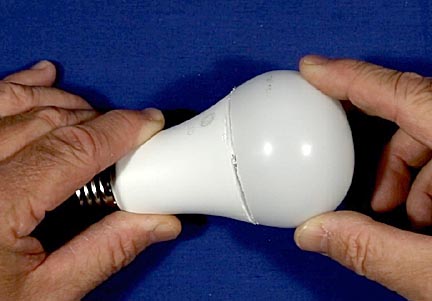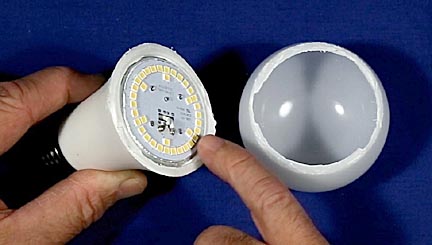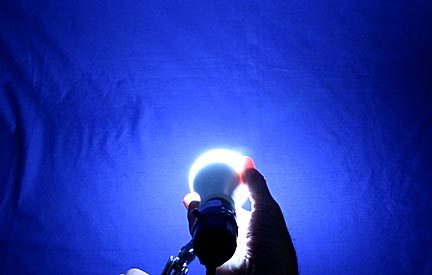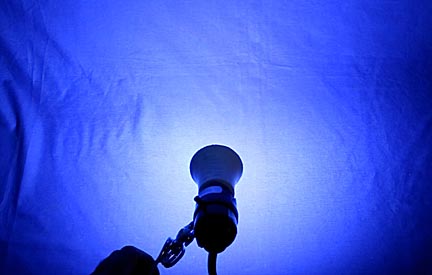


The latest generation of LED light bulbs offer unprecedented efficiency, cool operating temperatures, wide color ranges and are much more durable that the old incandescent or fluorescent bulbs. Which are all great, but I got to wondering what's inside one of these LED bulbs. The one pictured above was advertised as being equivalent to a 100-watt incandescent bulb but only drew 15 watts. Here's what I found:
Cutting off the spherical diffuser was more difficult than anticipated. The plastic is tough and thick.

Inside was a flat face with a ring of 30, 1/8th inch squares and 6 more squares just inside the ring. When powered, all the squares give of a brilliant white light. This surprised me because I expected a mix of primary colors, which combine to produce white light. The base converts 120 AC house power into 69 volts DC. This means each of the LEDs gets slightly less than two volts. This was another surprise because all the component LEDs I've used to date operated at 3.2 volts DC.
When turned off, the DC voltage doesn't immediately drop to zero, but slowly decays over several minutes. This explains why, when the bulb is turned off, it continues to glow for a period of time.
With the diffuser in place, the bulb produces a fairly even field of illumination.

But, when the diffusers is removed, the flat LED array produces an almost spot light effect. This could be useful to gardeners wanting to experiment with LED lighting for growing plants indoors.

Unlike fluorescent tubes, these bulbs direct all their light forward and do not require reflectors. Better still, their shape allows them to be packed very close together producing much higher levels of illumination.
For a live action version of this page, please click on the following link:
Return to my main page to browse 60 other subjects